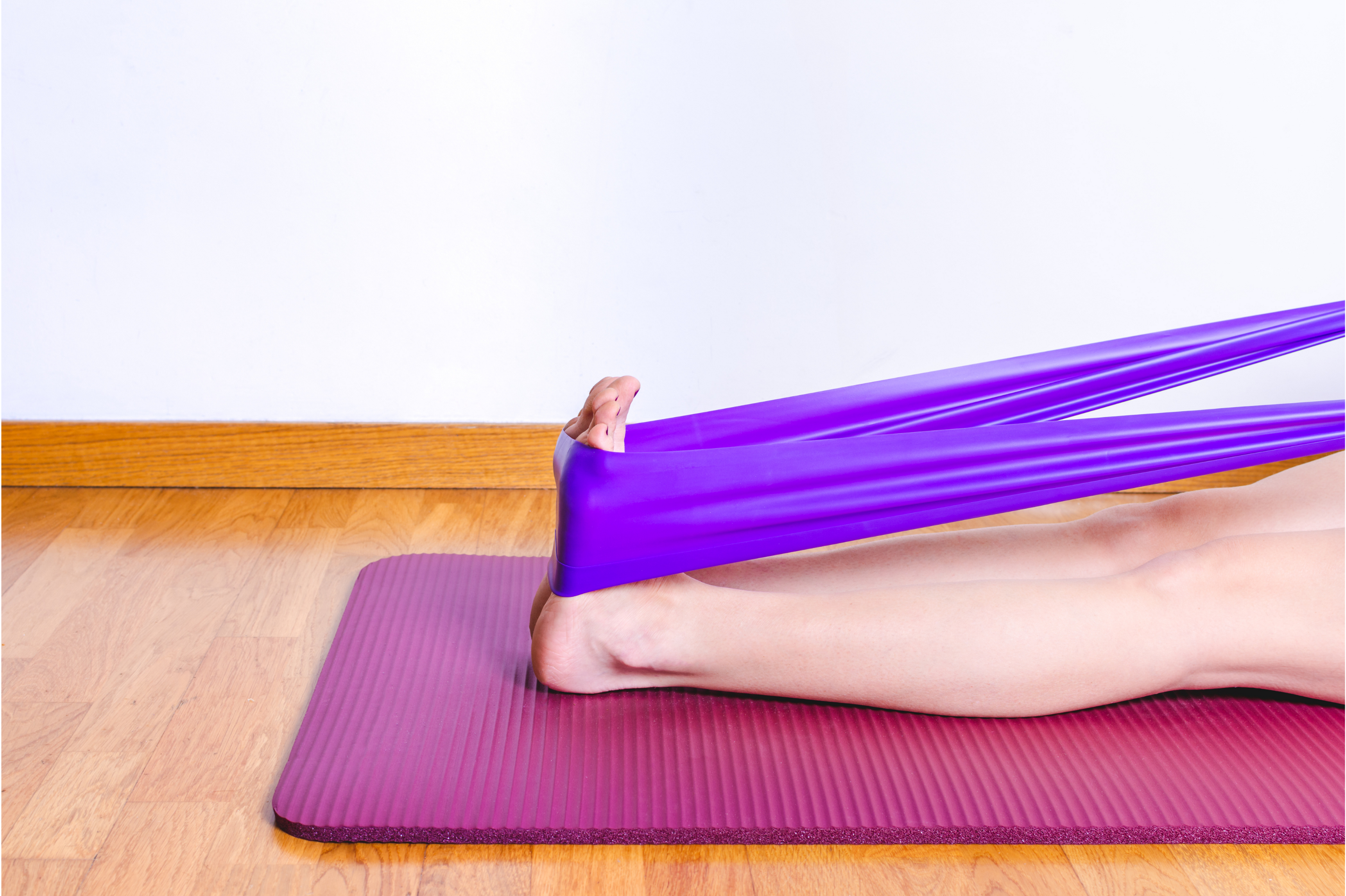Does Achilles tendonitis icing work? Your top questions answered
Should you ice Achilles tendonitis?
While some people with Achilles tendonitis may find it helpful in managing their symptoms, icing is not beneficial or necessary for everyone.
The general rule is to only use ice for your Achilles when necessary.
When can icing help with Achilles tendonitis?
If pain stops you from doing your rehab exercises and impacts your recovery, icing can be helpful.
While it doesn't directly speed up tendon healing, research shows icing can reduce pain. Less pain can help you stay consistent with your exercises, keeping you on track with your treatment plan.
Anti-inflammatories vs Achilles tendon icing
Icing is usually better than taking anti-inflammatory medications (like ibuprofen) for reducing Achilles tendon pain because these medications can interfere with tendon healing.
Other treatments vs Achilles tendon icing
Although icing can help reduce pain, relative rest and heel-raising inserts are more effective home treatments for managing Achilles pain than icing.
You can save valuable recovery time and effort by focusing on modalities with more combined benefits and evidence to support their use.
Common mistakes when icing Achilles tendonitis
As with all treatments, ice can also negatively impact your recovery if you overdo it. Two of the most common pitfalls with Achilles tendonitis icing are:
1. Applying ice for too long
To function optimally, our body tissues must remain at around 98.6°F (37°C). Excessively cooling your Achilles tendon may interfere with the healing process, slowing your recovery and potentially making you vulnerable to further injury.
2. Icing after every rehab session
Evidence suggests that routine icing after exercise sessions can reduce the positive effects of training — for example, tissue strengthening.
That means you’ll get fewer benefits from your Achilles tendonitis exercises if you ice your tendon immediately after every training session.
Achilles feeling worse after your rehab workouts?
The Exakt Health app makes it much easier for you to pitch your exercise level correctly. It automatically sets your training intensity to suit your tendon’s strength and adjusts your program based on your feedback after every training session.
Is ice or heat better for Achilles tendonitis?
Ice is usually better than heat for Achilles tendonitis, but this depends on the cause of your injury and how long you’ve had your Achilles pain.
Why the cause of your injury matters
When antibiotics or conditions like gout cause Achilles tendonitis, there's often excessive inflammation present in the tendon.
In these cases, heating the area can worsen the inflammatory response and aggravate your condition.
In contrast, cooling the area with ice can reduce pain and inflammation, which helps to keep you mobile and able to exercise, indirectly enhancing your recovery.
So, if you have an underlying inflammatory condition associated with your Achilles tendonitis, it’s best to avoid heat and use ice instead.
Why your pain timeline matters
For new Achilles tendon injuries, regardless of their cause, ice is usually the better option than heat.
That's because inflammation may be present during the first few days following your injury. As explained above, pain and inflammation respond more positively to ice than heat.
In ongoing Achilles tendon pain, where pain has been present for more than a month, research indicates it’s unlikely that inflammation is still playing a major role in the condition.
In that case, heat may be more helpful than ice to manage your discomfort.
Remember, neither ice nor heat will speed up your Achilles tendon healing – both only help by reducing pain.
Heating or icing your Achilles tendon can also worsen your injury if you apply them...
Lastly, there are more effective treatments to consider than heat and ice for Achilles tendonitis.
In a previous article, we highlighted the best treatments (according to research) for Achilles tendonitis in runners to help reduce your pain, strengthen and heal your Achilles tendon, and prevent your injury from recurring.
The Exakt Health app also offers personalized guidance and evidence-based tips for smoothly and effectively managing Achilles tendonitis. You can start using it at any stage of your recovery, and the app will adjust to your current condition, helping you progress towards a full return to sports.
How to apply ice for Achilles tendonitis
Safety guidelines for icing Achilles tendonitis
- Only use ice when necessary (not routinely).
- Remove ice immediately if it causes pain.
- Do not ice your Achilles tendon if you have an open wound, loss of sensation, or decreased circulation (e.g., Raynaud's disease) in the area.
What you'll need before you start
- A comfortable place to sit or lie
- A wet towel or cloth
- An ice pack – a gel ice pack, a bag of frozen peas, or a resealable plastic bag filled with ice
Step-by-step instructions: Achilles tendon icing
- Position yourself comfortably with your painful Achilles area exposed.
- Place a wet towel over the exposed Achilles area to protect your skin, then place the ice pack over it.
- You can wrap a towel around the ice pack to secure it.
- Alternatively, you can rest your heel on the ice pack, but sometimes, this downward pressure can further irritate an already sensitive tendon (a bit like pressing on a bruise).
- Apply the ice for 10 minutes, then remove it for 10 minutes before reapplying it for another 10 minutes.
Removing the ice for 10 minutes will help protect your skin from injury due to excessive cooling.
Frequency of Achilles tendon icing
You can ice your Achilles tendon up to 3 times per day, but ensure you leave at least 6 hours between each icing session to prevent an over-icing injury.
Conclusion
When you have Achilles tendonitis, use ice only when necessary, avoid it when it's not, and be sure to combine it with other essential treatments to maximize your chances of fully recovering.
A comprehensive treatment plan should include a range of evidence-based treatments that help reduce pain and strengthen your tendon.
With the right approach, you’ll heal your Achilles tendon and finally free yourself from the fear of missing those sporting events on your calendar.
At Exakt Health, we’re runners ourselves. We understand and value your fitness and sporting goals. We designed the app to help you get back to your favorite activities even stronger and to equip you to train safely, reach your goals, and prevent injuries in the future.



